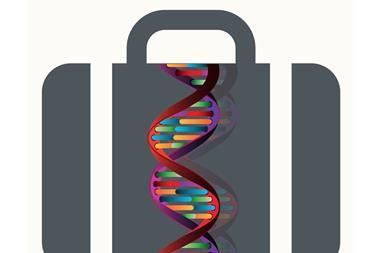Hydrogen bonds keeping the cube’s shape only unzip in the presence of a very specific trigger
Scientists in Canada have made DNA cubes that are programmed to unzip and reveal molecules locked inside them in response to a carefully chosen trigger. Hanadi Sleiman and colleagues at McGill University and the Jewish General Hospital in Montreal, designed the cubes to release the drug cargo they might be carrying only in diseased cells and not normal cells.

‘In the future, we would like to use our DNA cubes in the treatment of cancer and other diseases with a genetic component,’ says Sleiman. The cube opens into a flat assembly when a specific RNA sequence, in this case a gene product that is unique to prostate cancer cells, binds to two single-stranded DNA overhangs on the corners of the cube, disrupting the hydrogen-bonds that maintain the cube’s shape. Sleiman says it would be easy to change the sequence to which the cube responds and since the cube has two overhangs, ‘it would also be possible to make a cube that responds to two different triggers.’
The DNA cube was also modified with hydrophobic and hydrophilic chains to modulate its cellular uptake and prevent enzymatic degradation.
‘Compared with previous DNA origami-based designs the present system does not rely on the use of M13 [bacteriophage] DNA and can therefore be applied to many targets,’ comments Hiroshi Sugiyama, a DNA nanotechnology expert at Kyoto University in Japan.
Next the team hope to demonstrate the encapsulation and release of sensitive oligonucleotide drugs, such as siRNA, using their new DNA platform.







No comments yet